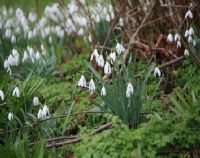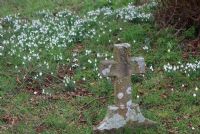

|
|
|
Snowdrop (Galanthus Nivalis) Snowdrop (Galanthus Nivalis) Date added: 18/02/2023 12:33:19 The winter has been long, dark and wet so what a joy it is to see snowdrops letting us know it won’t last too much longer. The translation of their proper name, Galanthus Nivalis, means ‘milk flower of the snow’ which is a lovely description. There are many garden varieties which have all been bred from our native species. Unfortunately, their current conservation status is ‘near threatened’ which means they are decreasing. The easy way to help is to buy them when they are sold ‘in the green’ which means just as they finish flowering and plant them in a damp wood environment where they can become established. Ancient folklore surrounds this flower, and it was held to bring bad luck to take it indoors because it was believed to herald a death and cause milk and eggs to 'go off’. However, in some areas, it was carried into homes as part of a cleansing ritual. It is important to know that, as with other members of the lily family, it is harmful to eat and also can cause skin irritation. Modern research has found that there is an active alkaloid in the plant which has been shown to benefit people living with dementia by increasing a chemical in the body called acetylcholine which aids memory and brain function. An early 19th century Scottish poet, George Wilson paid homage to these special harbingers of spring in a poem where he writes, comparing them to a rainbow. And thus the snowdrop like the bow That spans the cloudy sky Becomes a symbol whence we know That brighter days are nigh. © FNRC
Images related to this news article |
Website designed and maintained by Paul Thompson on behalf of the Friends of Newtown Road Cemetery.


